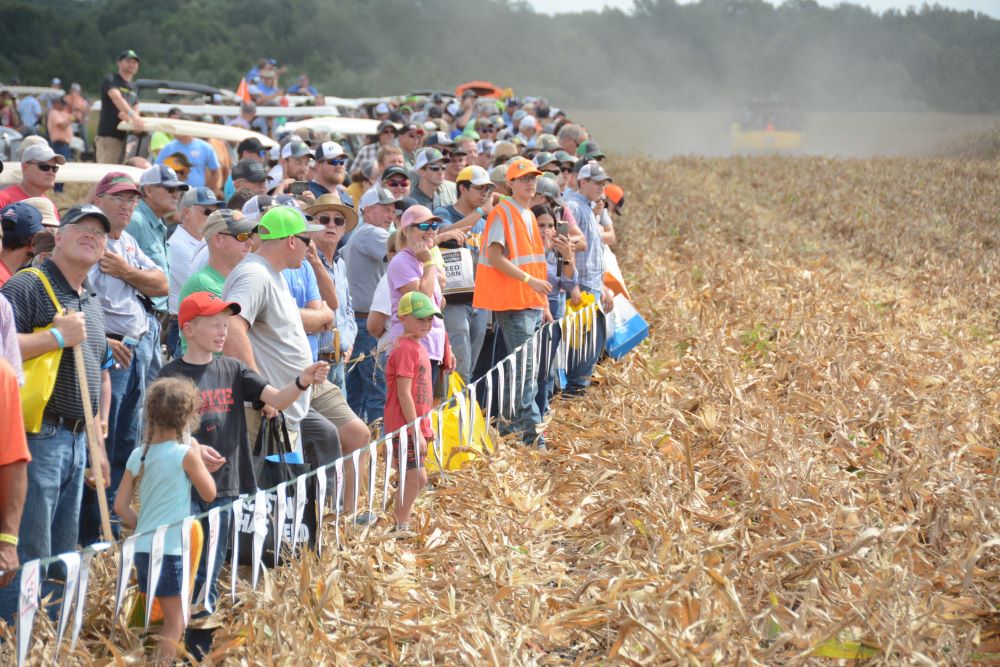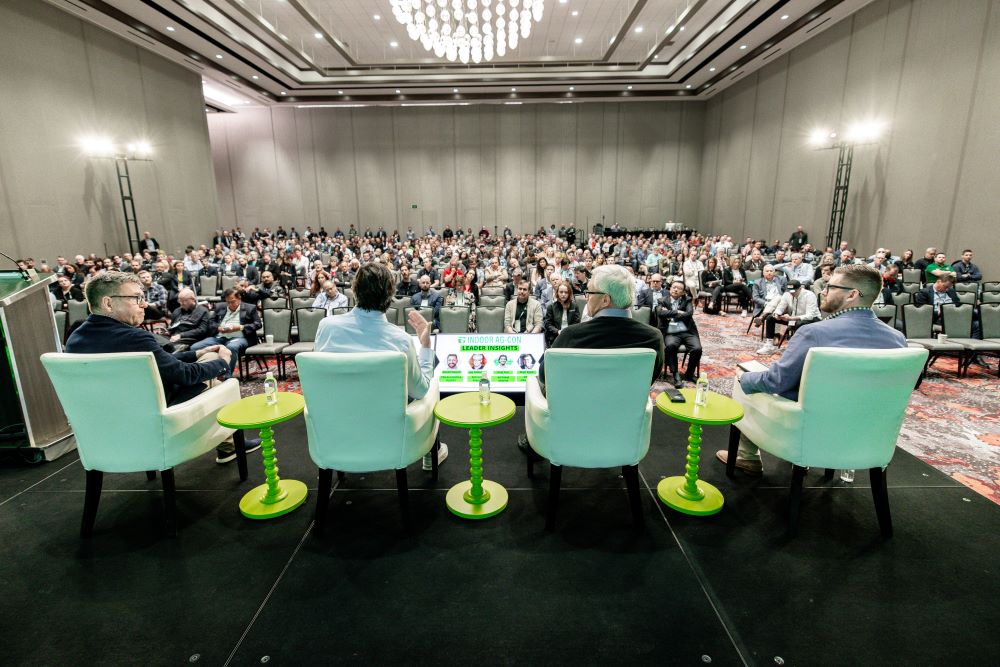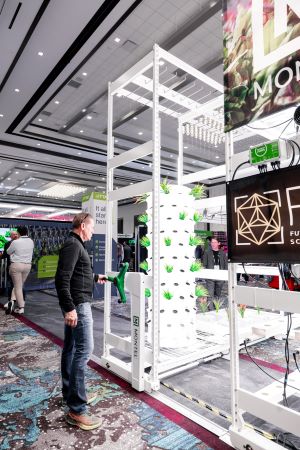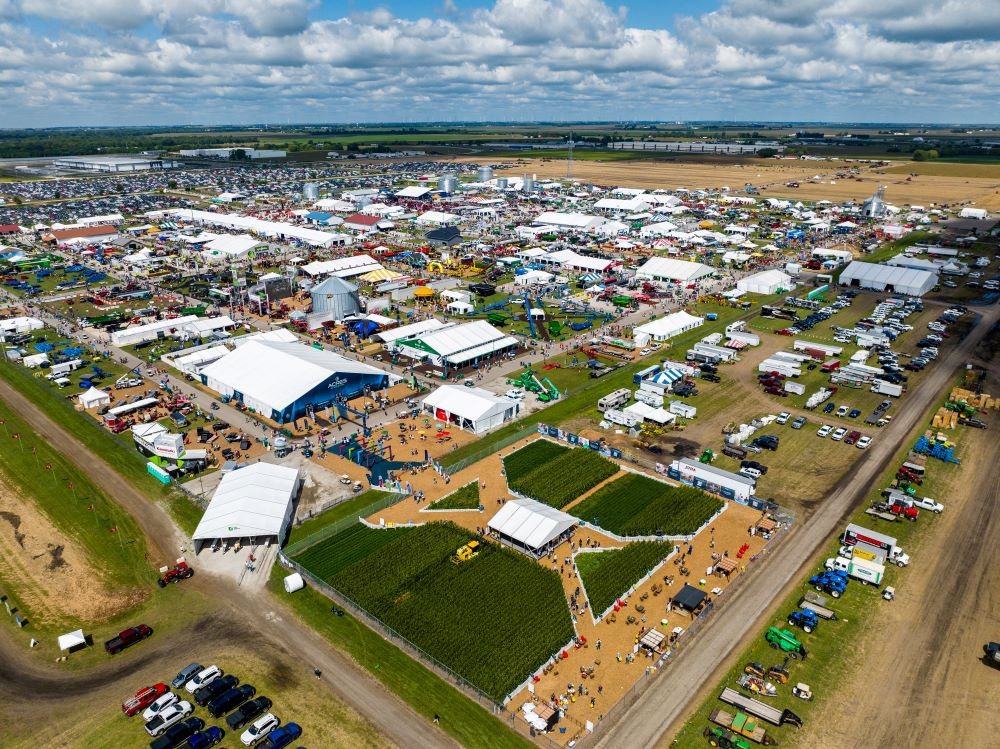When it comes to large tradeshows, it may not get any bigger than the annual Farm Progress Show, which organizers claim is the largest by area in the U.S., sprawling out on actual heartland farms.
On the flip side, Indoor Ag-Con, which represents an exponentially growing indoor agriculture segment that includes greenhouses and vertical and container farming—even transforming abandoned buildings into LED-lit farms—is relatively diminutive in comparison. Drawing even more contrast, for the last three years it has occupied the polar opposite of a Midwest farm: Las Vegas’ Caesars Forum.
One thing both shows have in common, however, is the growing importance of implementing high-tech solutions to ensure their events continue to draw and satisfy attendees.
We talked with the lead organizers for both ag industry shows and discovered how both are very different while also sharing similarities.
[Related: What Components Make Successful Agriculture Meetings?]
Farm Progress Show: Large and In Charge
This Informa Markets show is held in the late-August time frame—after harvest—and rotates between Decatur, Illinois, in odd-numbered years, and Boone, Iowa, in even-numbered years.

“We started that rotation in 2005,” said Matt Jungmann, national events director at Farm Progress Companies, adding that the group also holds another outdoor show and two smaller winter events. “The show started in 1953, and before we went to our two-sites strategy, we would build the show in a farmer’s field and go to a new farm every year—that was a pretty difficult undertaking to do every year. So, it got a lot easier when we poured concrete and got storm sewer drainage and electricity and other utilities. Our life got a lot easier and the show got a lot better when we finally landed it in permanent sites.”
Jungmann actually lives on a farm in western Illinois, so even though he has no formal training as an event planner, his rural background combined with a long history of planning events from right out of college at Iowa State and have served him well.
“It gives me a pretty solid knowledge base to put on the events because I have a pretty good idea of how farmers think and act and what they want,” he said. “I’ve been learning on the job for almost 30 years, so I’m finally getting good at it.”
Agriculture shows, like modern agriculture itself, are defined by technology, with large pieces of farm equipment fitted with cutting-edge computing power and up to 10 drone companies alone providing demonstrations at the Farm Progress Show. Virtual reality applications also play a big role.
[Related: Midwest New & Renovated Property News]
Largest Tradeshow in the United States
With an event the size of the Farm Progress Show, you better be good at logistics, because the event sprawls out over 600 acres with “moving parts” that include hulking farm equipment, non-permanent exhibit areas—the John Deere exhibit alone is more than 61,000 square feet and growing—and the need to shuttle attendees quickly and efficiently around such a large area.
“The Farm Progress Show is actually the largest tradeshow in the country. It’s bigger than anything that goes on in Vegas—the exhibit field itself is 4 million square feet,” Jungmann said. “I actually live in acres instead of square feet, so that’s a 90-acre exhibit field and then 200 acres of parking and 350 acres of field demonstrations.

“Another thing about this is the contrast side by side,” he added. “You have a company with this big outdoor exhibit and a little tent in the middle, and then right next door are big air-conditioned tents with stages in them, and there’s all kinds of production going on in there.”
Load-in and load-out is another feat of logistics calculus, with the first tents starting to fly and the electrical distribution set in the field a full six weeks before the show.
“And then the landscapers come in and start putting down the woodchips and landscaping and that kind of thing,” Jungmann said. “And then a few weeks before the show, the iron starts to roll in, and then the week before the show, you’re doing the graphics and getting everything prettied up. And then, finally, the actual company staff comes in to work the show.”
Load-out also typically takes a month and a half, with many exhibitors and crews bringing campers to stay for the duration.
[Related: Why You Should Host Agriculture Meetings at Ag Colleges and Universities]
Essentially taking over an entire rural community, of course, requires a high-degree of buy-in from the local citizenry as well as the local, county and state governments and public service entities. It helps that the shows are held in areas where their key demographic lives.
“We have the shows where they are,” Jungmann said. “We don’t have the things that a convention town would have—the staff and the security and the food service and a lot of that kind of thing—so the food service is all done by church groups and nonprofit groups. We have a lot of nonprofit groups that help us get the cars parked and drive trams. It takes a lot of effort by the state [highway] patrol and all the local law enforcement agencies, the departments of transportation—we’re doing signage for 30 miles in every direction away from the show.”

Jungmann offers the following advice for his colleagues that plan large shows of this type.
“When you have something this big going on, there’s a lot of balls in the air, there’s a lot of juggling—a whole lot going on and a whole lot of people to keep happy,” he said. “Negotiation, delegation, a lot of people skills to try to keep everybody as happy as possible from one end of the event to the other. And one of the things I’ve learned over the years that I didn’t necessarily anticipate learning is that I’ve kind of become an amateur meteorologist, because I’m so weather dependent.”
As with his farmer attendees, it seems the one thing that keeps Jungmann up at night is the weather.
Indoor Ag-Con: An Alternative Farming Future

Juxtaposed to the Farm Progress Show, Indoor Ag-Con utilizes traditional event space in a destination that is about as far from the farm as could be.
Held in mid-March this year at Las Vegas’ Caesars Forum and entering its third year co-locating with the National Growers Association show, Indoor Ag-Con is entering its 11th year after being acquired by three seasoned event professionals in 2018. Since then, it has grown from approximately 300 attendees and 30 exhibitors to 1,500 attendees and 200 exhibitors, along with more than 70 speakers, for the 2024 edition. After a successful three years at Caesars Forum, the growth of the event requires it be held March 11-12 at Westgate Las Vegas in 2025.
“It’s a small niche industry but it’s certainly growing, that’s for sure,” said Suzanne Pruitt, event director for Indoor Ag-Con. “Covid certainly cast a bit of a spotlight on indoor agriculture due to supply chain issues, because a focus with indoor agriculture is local foods and indoor agricultural production close to major urban areas.”
Like many organizations, Indoor Ag-Con had to pivot to online events during the pandemic, which live on in the form of its monthly Indoor Ag-Conversations webinar series. The idea to co-locate the show and have them both managed by Clarion Events also stemmed from the pandemic era.

Indoor Ag Means Technology
As with its traditional agricultural industry counterparts, indoor agriculture relies on technology to turn what can be slim margins into a successful business model.
“Irrigation systems, lots of robotics and automation, computer vision with cameras going up and down the rows monitoring changes in the plants—everything is automated from seed to harvest—so these growers really need to make data-driven decisions on the climate, lighting, etc.,” Pruitt said, adding that the technology-driven aspect of the industry understandably translates into a high-tech event.

“We have a pretty standard expo floor, from island booths to 10-by-20s and larger booths, [showcasing] crop monitoring tools, with a lot of video screens,” Pruitt said. “They’re showcasing everything—foggers, irrigation systems—that people can really see and touch. And we’ve had some exhibitors with virtual reality demonstrations, so attendees have goggles on and can see how things work on a farm.”
Indoor Ag-Con currently has two events, the large Vegas show as well as a smaller CEA (Controlled Environment Agriculture) Summit held during the fall in Danville, Virginia, spurred by the state’s support for the CEA industry and featuring about 400 attendees and 22 tabletop exhibits.
“It really is a wonderful gathering and networking experience for this industry,”
Pruitt said of the shows. “This is a very young industry, and watching it grow along with our show side by side is really exciting.”






